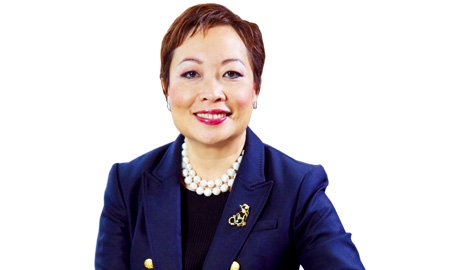
Although medical coverage is universal, many Malaysians have private insurance policies. Given the quality of private medical centers, it is easy to see why.
UK-educated and trained Dr. Chong Su Lin is CEO of Prince Court Medical Centre (PCMC), which was named "World’s Best Hospital" for medical tourism last year by Medical Travel Quality and is fully-owned by Petronas. Here, she discusses Prince Court’s role in offering high-end medical services and her vision of the future of healthcare in Malaysia in line with the state’s development objectives.
Please tell us how PCMC has contributed to transforming Malaysia’s healthcare system.
Prince Court was set up to provide the sort of cutting-edge healthcare that Malaysians were going abroad for. The intent was to have world-class expertise and services to offer to both Malaysians and ‘health travelers’.
| ”The key impact was getting both private companies and public sector agencies together – to understand each other and come up with a joint working solution.” |
How are you taking advantage of medical tourism?
Indonesia has always been the biggest market for Malaysian hospitals, for everything from primary care to open-heart surgery, because access is easy and there is no issue with the language. Malaysia provides value for money in this regard.
We also have a higher-income stratum of patients who would traditionally have sought care in Singapore but who are now exploring other countries. Prince Court has seen a large uptick in patients from Libya and Somalia.
Our major volume comes from the white-collar expat community – from the USA, UK, Australia and France.
What is the potential for Malaysia to become a regional hub when it comes to healthcare R&D?
This is an area of focus within the Healthcare National Key Economic Area (NKEA) of the Economic Transformation Programme (ETP) of Malaysia. Malaysia is ideally placed to play an increasing role in this niche sector due to our English-speaking doctors and multi-racial population – both form a very good basis for medical research involving new prescription drugs or medical devices.
One of the reasons that healthcare was added as an NKEA was that even without government support, it was showing good, steady, organic growth. SMEs were trying to expand their businesses on their own, and there was no consolidated effort. The key impact was getting both private companies and public sector agencies together – to understand each other and come up with a joint working solution mainly aimed at reducing the speed bumps and constraints for accelerated business growth.
There are huge opportunities beyond just the traditional hospital services, e.g. in generic drugs, medical devices and medical equipment. We are hugely more cost-effective in manufacturing hospital beds, for instance, and in reducing reliance on imported models that can cost two to three times that of a local bed. It is a sunrise industry.
0 COMMENTS